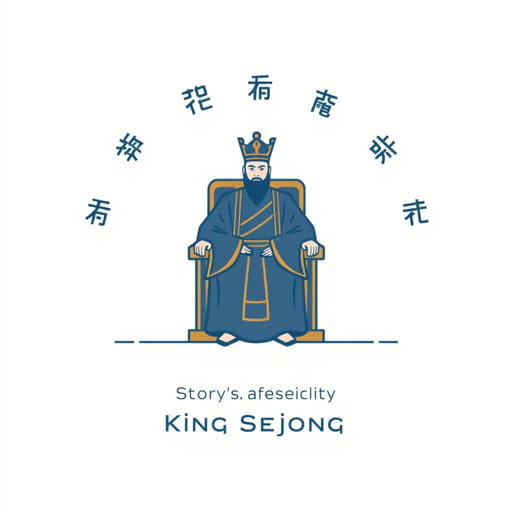The Story Of King Sejong
Among the most revered figures in Korean history, King Sejong stands out as a ruler whose reign profoundly shaped the culture, science, and identity of Korea. Known not only for his wisdom but also for his commitment to education, innovation, and governance, King Sejong’s story is one of remarkable leadership. His legacy endures to this day through the Korean alphabet, Hangul, and the many reforms he introduced that promoted justice, equality, and progress for the people of the Joseon Dynasty. Understanding the story of King Sejong offers deep insight into the foundations of modern Korean society and the significance of thoughtful and enlightened rule.
Early Life and Rise to the Throne
King Sejong, born as Yi Do in 1397, was the third son of King Taejong, the third monarch of the Joseon Dynasty. Although he was not originally the crown prince, his intelligence and demeanor quickly set him apart. His older brothers were disqualified due to political or personal shortcomings, and in 1418, King Taejong abdicated in favor of Sejong, recognizing his exceptional capabilities. At the age of 21, Yi Do was crowned King Sejong the Great.
His Intellectual Background
Even before ascending the throne, Sejong demonstrated a strong passion for knowledge. He was educated in Confucian classics and developed a deep appreciation for literature, astronomy, music, and law. His scholarly interests laid the foundation for the cultural and scientific blossoming of his reign. This intellectual grounding shaped his vision of governance one that valued knowledge, merit, and fairness over lineage or wealth.
Creation of Hangul: A Monumental Achievement
Perhaps the most famous of King Sejong’s accomplishments is the creation of Hangul, the Korean alphabet. At the time, written Korean used Chinese characters (Hanja), which were complex and inaccessible to most of the common people. Sejong believed that everyone, regardless of class, should have the ability to read and write their own language.
Why Hangul Was Revolutionary
In 1443, King Sejong began developing a simple, phonetic writing system. After three years of work with a group of scholars known as the Hall of Worthies (Jiphyeonjeon), he introduced Hangul to the nation. Initially called ‘Hunminjeongeum,’ meaning ‘The Correct Sounds for the Instruction of the People,’ Hangul was a carefully crafted system designed to reflect the sounds of spoken Korean.
- Hangul consists of 14 consonants and 10 vowels.
- Its structure is logical, making it easy to learn.
- It allowed farmers, women, and laborers to become literate.
The introduction of Hangul is widely regarded as one of the most important cultural milestones in Korean history and a major contribution to global linguistics.
Scientific and Technological Contributions
Beyond language, King Sejong championed scientific discovery. Under his guidance, Korea developed advanced technologies that improved agriculture, timekeeping, and astronomy. He supported inventions that served the public and advanced the kingdom’s infrastructure and defense.
Significant Innovations
- Rain Gauges: The Cheugugi, one of the world’s first standardized rain gauges, was invented to measure precipitation and help farmers plan their harvests.
- Water Clocks: More accurate timekeeping devices were created to regulate state ceremonies and agricultural schedules.
- Astronomical Tools: Instruments such as armillary spheres and celestial globes were developed to chart stars and improve calendars.
These innovations not only advanced Korea’s scientific knowledge but also reflected Sejong’s deep concern for practical improvements in the lives of ordinary citizens.
Promotion of Justice and Good Governance
King Sejong’s reign is often highlighted for its fairness and commitment to justice. He actively participated in state affairs and regularly sought the advice of his officials. He introduced reforms that reduced corruption, improved the judicial system, and encouraged social mobility through merit-based civil service exams.
Fair Taxation and Land Reform
To reduce the burden on peasants and promote fairness, Sejong initiated a land survey to determine accurate taxation levels. By aligning taxes more closely with land productivity, he ensured that farmers were not overburdened. This reform helped stabilize the economy and strengthen loyalty to the crown.
Listening to the People
King Sejong often solicited feedback from various classes of society. He welcomed petitions from commoners and held open discussions among scholars and ministers. His ability to listen and respond effectively helped build trust between the throne and the people.
Encouragement of Arts and Culture
Sejong’s court was a hub for cultural development. He patronized poets, musicians, painters, and philosophers, creating an environment where creativity could flourish. Literature in both classical Chinese and native Korean thrived, and music was codified and systematized.
Compilation of National Works
- TheYongbieocheonga(‘Songs of the Dragons Flying to Heaven’) was one of the first works written using Hangul, celebrating the Joseon dynasty’s founding.
- Scholars compiled medical texts to improve public health, including ‘Hyangyak Jipseongbang,’ a guide to herbal medicine.
These cultural efforts helped define Korean identity and laid the groundwork for a cohesive national consciousness.
Legacy of King Sejong
King Sejong passed away in 1450, but his influence on Korea has endured for centuries. He is remembered not only as a wise ruler but also as a visionary who deeply cared for his people. His image appears on South Korea’s 10,000 won bill, and numerous institutions bear his name, such as the Sejong Institute and Sejong City.
Modern Recognition
- October 9th is celebrated in South Korea as Hangul Day in his honor.
- King Sejong is one of only two Korean monarchs to be given the title the Great.
- He remains a symbol of just leadership and intellectual brilliance.
The story of King Sejong is one of transformative leadership, cultural pride, and unwavering dedication to the welfare of the people. His reign brought literacy to the masses, advanced science, and fostered a rich cultural heritage that continues to inspire Korea and the world. More than a ruler, King Sejong was a scholar-king whose contributions remain a vital part of Korean history and identity. His life is a testament to how enlightened leadership can uplift an entire nation and create a lasting legacy that transcends time.
